March the 23rd marks National Eucalypt Day (see fact sheet from 2018, 360kb PDF) in Australia. Prior to COVID-19 the Botanic Gardens and State Herbarium had been preparing for two different eucalypt themed tours at Adelaide Botanic Gardens with State Herbarium and Botanic Gardens staff on the 22 and 23 March 2020. Unfortunately we have been forced to cancel them.
We will reschedule these tours sometime in the future but until then we will share some thoughts about this interesting group of plants that marks the occasion.
The eucalypts are actually three genera of predominantly Australian plants: Angophora, Corymbia and Eucalyptus (see also Australian Plants Society fact sheet, 4.5mb PDF). There are over 800 named species of eucalypts. While the majority of eucalypts are purely native to Australia there are a handful of species that have escaped the continent to the north and are native to Timor, New Guinea, Indonesia and the Philippines. The revised Flora of South Australia treatment for eucalypts was published in 2014 (33.8mb PDF).

May Gibbs Stamp, 2016
The living species that occur outside of Australia have fossil ancestors. In fact, the oldest known eucalypt fossil comes from Patagonia and is 52 million years old. Eucalypt fossil leaves have also been found in New Zealand, estimated to be about 20 million years old. We know though that eucalypts are not now native to either South America or New Zealand so at some point they became extinct in those countries and left Australia with an iconic plant group. An article on The Conversation last year discussed how the eucalypts came to dominate Australia.
The eucalypts gained great popularity through the creative works of May Gibbs in 1920s. These artworks have also been celebrated in Australian Stamps.

May Gibbs Stamp, 1985
It is poorly known that when May Gibbs first came to Australia as a child she first lived in South Australia, including in Norwood for a short time. Her family then moved to Western Australia where she spent most of her formative years. May Gibbs’ most famous characters, the gumnut babies Snugglepot and Cuddlepie, use various parts of eucalypts for their clothes. The most well-known pictures of the gumnut babies sees them sitting in big gumnuts which in fact are Corymbia fruit and not of Eucalyptus, most likely Corymbia ficifolia a native tree of Western Australia, and also a common street tree all around Australia. The hats that the gumnut babies wear are the calyptra (cap) of a eucalypt — petals that have evolved to form a protective bud cap. When a eucalypt flower opens the bud cups are pushed off and hundreds of anthers pop out. To raise public awareness for the Spanish Flu outbreak in 1919 May Gibbs painted a scene of a Kookaburra and a gumnut baby both wearing gum leaf facemasks — apt for our times.
On that note we want to say — Happy Eucalypt Day!
We hope that you stay safe and tucked away in your gumnuts until it is safe to come out.
Compiled by Andrew Thornhill, State Herbarium of South Australia & The University of Adelaide.


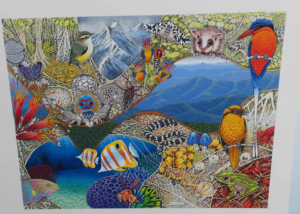
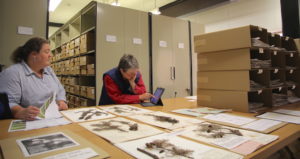
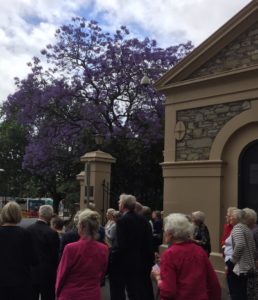
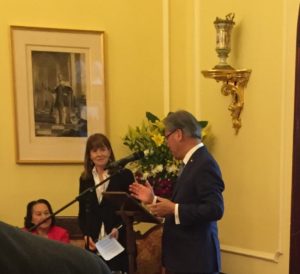
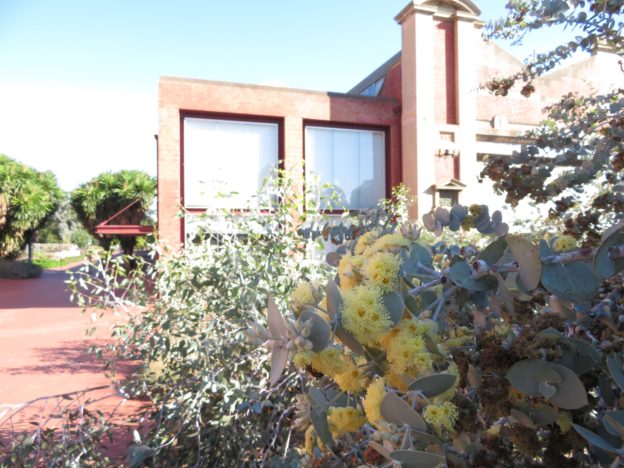
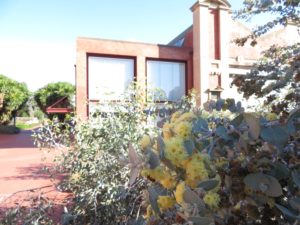 busy for the State Herbarium of South Australia to open its doors to the community.
busy for the State Herbarium of South Australia to open its doors to the community.

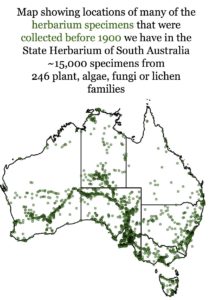
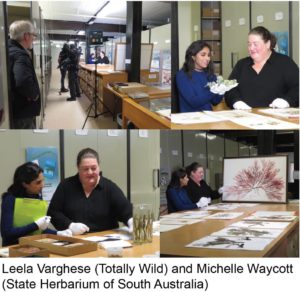
You must be logged in to post a comment.